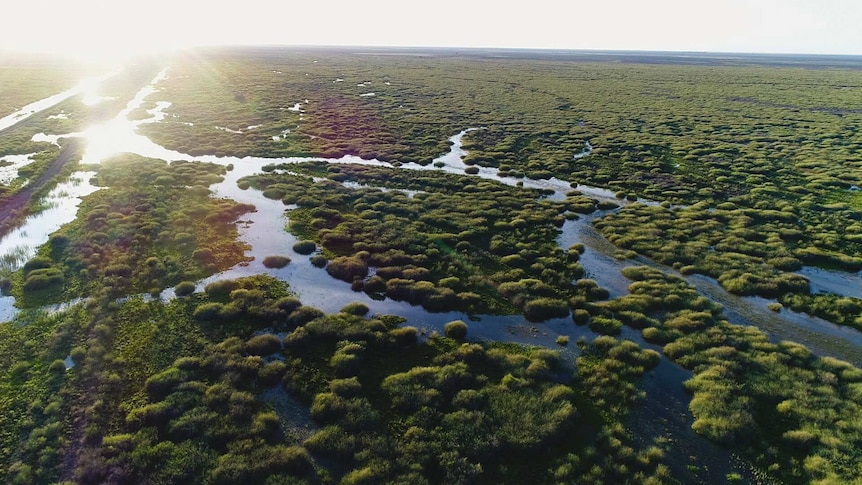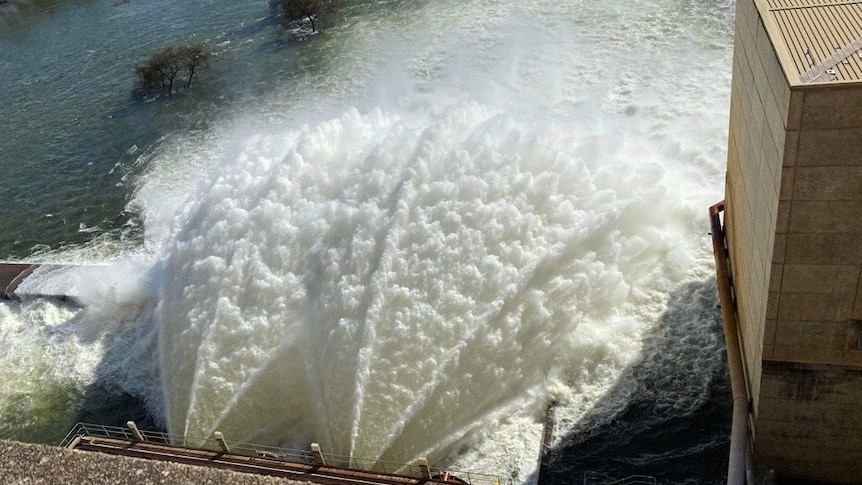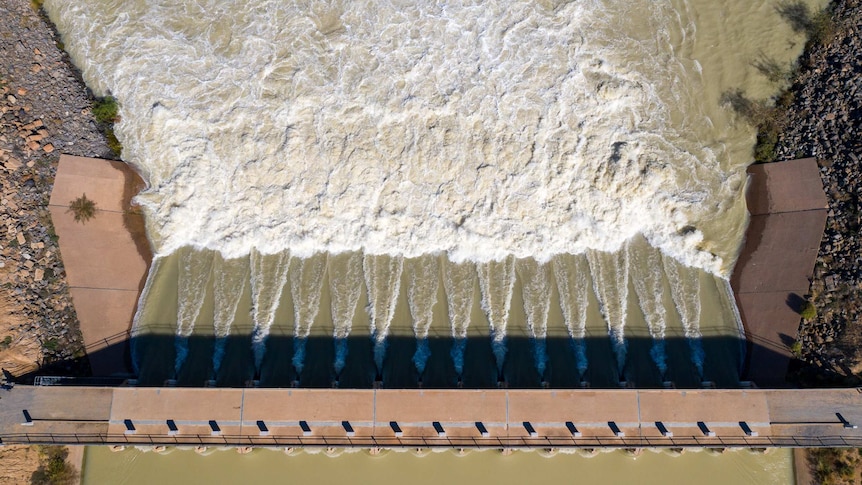With just two years until water-saving deadlines of the Murray-Darling Basin Plan, New South Wales is at high risk of not meeting its responsibilities.
Key points:
- The eighth MDBA report card shows seven state-managed water-saving projects are at high risk of not being delivered
- MDBA chief executive Andrew McConville says the environment is benefiting from the first decade of the Murray-Darling Basin Plan
- Federal Agriculture Minister Murray Watt says he is yet to speak to Water Minister Tanya Plibersek about buyback options
A new report card by the Murray-Darling Basin Authority (MDBA) shows that as of the end of July, New South Wales had formally submitted one of 20 water resource plans required to set out how water is used across catchments.
The recently appointed chief executive of the MDBA, former oil and gas lobbyist Andrew McConville, says the “New South Wales water resource plans are firmly in the red”.
“Without accredited water resource plans and a coverage catchment, it means that New South Wales is effectively working outside the basin’s compliance framework,” he said.
South Australia, Victoria and Queensland have completed their water resource plans.
Water projects at extreme risk
The eighth MDBA report card, released today, shows there are also a number of state-managed water-saving projects intended to recover large amounts of water for the environment “slipping behind”.
“There are seven projects that remain at high risk of not being delivered,” Mr McConville said, referring to the Sustainable Diversion Limit Adjustment Mechanism projects.
“That’s really going to require a concerted effort by the basin states to make sure that they can do everything they can to be delivered, and deliver that expected reduction in water recovery for irrigation community.”
The report card, released every six months, shows seven projects are considered at “high or extreme risk” of not being completed by June 2024.
Former Water Minister Keith Pitt had previously warned that some of these projects would not be completed on time.
Last week, a second review of the Water for the Environment Special Account (WESA) was tabled in the parliament, showing how little water had been recovered toward the 450 gigalitre target.
“I think that WESA report findings are not surprising… we’ve been indicating for some time, that delivering that target would be very challenging,” Mr McConville said.
He said while more work was required to complete the projects and reach the 450 gigalitre target, the environment was benefiting from the first decade of the Murray-Darling Basin Plan.
“We can already see what great benefits can be achieved by returning water to the river environment, with 2100 gigalitres in entitlements secured since the start of the Basin Plan,” he said.
Nothing is ruled out, minister says
Australia’s Agriculture Minister Murray Watt says he has not spoken to the water minister about the potential for the Commonwealth to buy water from farmers to meet environmental water savings targets.
Prime Minister Anthony Albanese made a pre-election commitment to deliver 450 gigalitres of water to the environment — a target set out in the 2012 Murray-Darling Basin Plan.
The water for this target was to come from efficiency projects.
In 2018, state water ministers agreed to a strict criteria about how the water could be reallocated and it has long been reported that just two gigalitres have been recovered toward that target.
As recently as last week, Water Minister Tanya Plibersek said she was considering using voluntary buybacks as a way of meeting environmental water commitments in the basin.
Asked if the federal government would appeal to a legislated cap on water buybacks, Ms Plibersek told the ABC: “voluntary water buybacks are definitely on the table.”
“I have said that we are considering a whole range of measures, I’m not ruling things in or out at this stage,” she said.
The Victorian and New South Wales governments, and the federal Coalition oppose buying water entitlements from farmers, arguing enough water has been bought back from irrigators as part of the Murray-Darling Basin Plan.
Asked at the National Rural Press Club this week if he would discuss the possibility of buybacks with Ms Plibersek, Agriculture Minister Murray Watt said he had not.
“I’ll be honest, I haven’t discussed water matters with Tanya up until now,” Mr Watt said.
“We’ve both been working on a few other things, but clearly it’s an issue that impacts on the [agriculture] portfolio. We remain committed to our election commitment about the 450 gigalitres.”
Nationals leader David Littleproud says Mr Watt’s remarks “show a sheer lack of understanding of the impact taking 450 gigalitres out of the consumptive pool would have on productive agriculture”.
“We’ve got all the states to agree on this, this trauma should not be reopened,” Mr Littleproud said.
.



